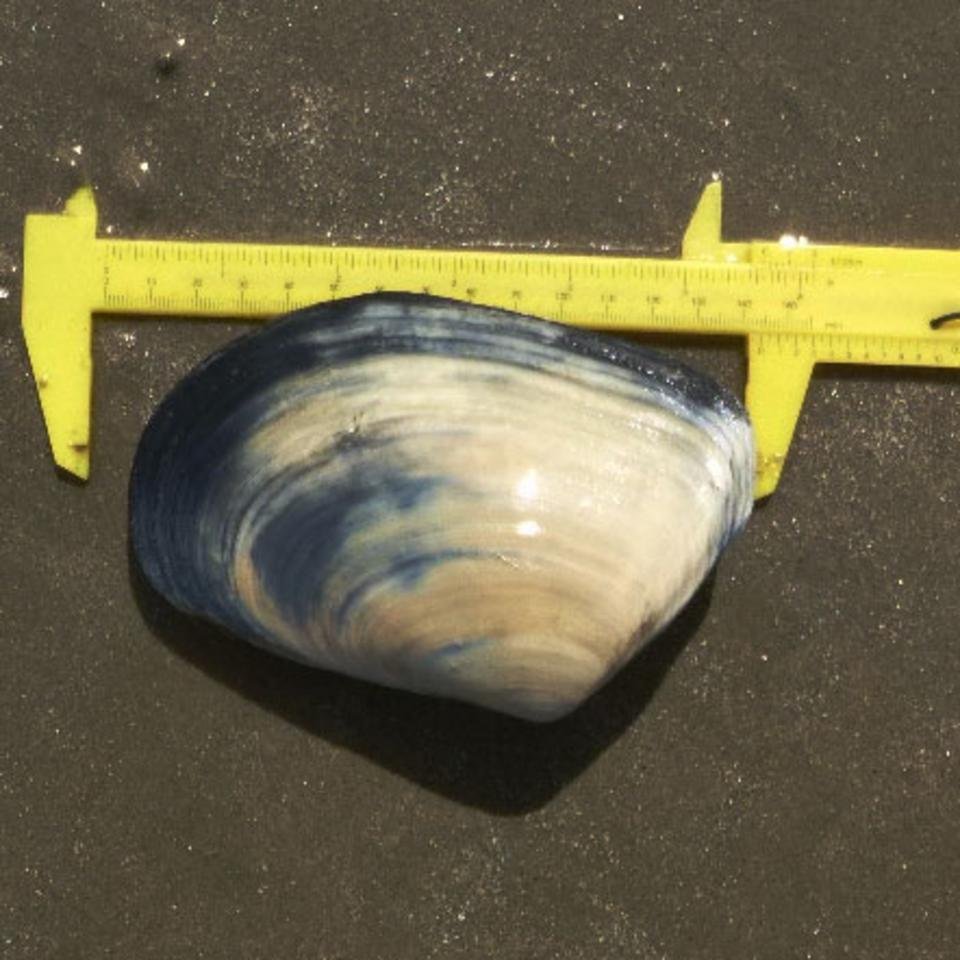Dragonfly surveyed the population of toheroa (New Zealand’s largest bivalve) at Oreti Beach near Invercargill in 2017. This followed an earlier survey in 2014. The beach supports one of New Zealand’s main toheroa populations and is the only substantial one in the South Island.
Katrin Berkenbusch led the survey work. “What was heartening was that we saw quite an increase in the number of juveniles at Oreti Beach over that time,” she says. “The toheroa are hanging in there despite the multiple threats they are facing.”
The survey was supported by MPI’s customary research fund, with co-funding from Te Ao Mārama, Waihōpai Rūnaka, Environment Southland, Invercargill City Council and the Department of Conservation. After it was completed, the survey findings were presented to a range of stakeholders at Murihiku marae.
Katrin enjoyed being able to present the findings directly to the local community. This was particularly appropriate given that the local agencies had contributed to funding the work.
“I went to the marae in Invercargill and thanks to the invitation from Ngāi Tahu kaumātua Michael Skerrett, presented it to DOC, the rūnaka, and other stakeholders and interested parties. One of the organisers of the Burt Monroe Challenge, a motorcycle race held on the beach, also came along. I loved being able to make that direct contact and raise awareness of toheroa in the local community.”
Estimates of toheroa on 18 km-long Oreti Beach in 2016–17 were 1.3 million toheroa with a shell length of 100 mm or greater, 2.2 million with a shell length of 40 mm or greater and 8.5 million juveniles (less than 40 mm shell length).
These numbers were all increases from the estimates in 2013–14. Of particular note was the increase in juveniles from 2 million in 2013–14, which was the lowest estimated number of juveniles since they were first sampled in 1998.
“The increase in juveniles is encouraging. Because juvenile toheroa settle high up on the beach they are particularly vulnerable to people driving in that area, for example. Another potential threat for juvenile toheroa is changing habitat – we found an increase in the proportion of gravel at the beach, which may be impacting juvenile settlement.”
Katrin is hopeful the results will encourage the Invercargill community to continue working towards ensuring the future of these taonga species on their beach.
Read the published report or read a previous news story about how the surveys were funded and carried out.


